About Tajikistan

General information
Area: 143,100 square kilometers.
Population: About 10,163,400 people
The official language: tajik
Capital: Dushanbe
A public holiday: Independence Day on September 9th
Currency: somoni.
Symbols: Flag of Tajikistan, Emblem of Tajikistan
Nationality: Tajiks (79.9%), Uzbeks (15.3%), Russians (1.1%), Kyrgyz (1.1%), others (2.6%)
Climate: acute continental
Natural resources: aluminum, coal, oil, gas, iron, zinc, antimony, mercury, gold, tin, tungsten, boron, carbonates, fluorine, precious and semi-precious stones
Main cities: Khujand, Kurgan-Tube, Khorog, Penjikent, Kulyab
The main industries: mining and metallurgy, hydropower, textile and clothing industries.
State symbols
The state symbols of the Republic of Tajikistan, as well as, in principle, many other countries of the world, are the coat of arms, flag and anthem.
Flag
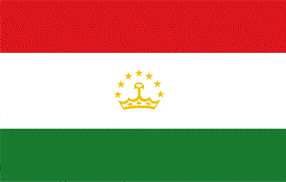 The national flag of the Republic of Tajikistan is a symbol of state sovereignty, the indestructible union of workers, peasants and intellectuals, friendship and brotherhood of all peoples living in the republic.
The national flag of the Republic of Tajikistan is a symbol of state sovereignty, the indestructible union of workers, peasants and intellectuals, friendship and brotherhood of all peoples living in the republic.
The national flag of the Republic of Tajikistan is a rectangular panel consisting of three horizontally arranged colored stripes: the upper stripe of red color and the lower stripe of green color equal to it in width, as well as the middle white stripe, which is one and a half widths of the side stripes.
A stylized crown and a semicircle of seven stars above it are depicted in gold on a white stripe at a distance of half the length of the cloth from the shaft. The ratio of the total width of the flag to its length is 1:2. The crown and the star fit into a rectangle, the sides of which are 0.8 vertically and 1.0 horizontally of the width of the white stripe. The five-pointed stars fit into a circle with a diameter of 0.15 and are arranged in an arc with a radius of 0.5 of the width of the white stripe. The date of adoption of the national flag is November 25, 1992.
Emblem
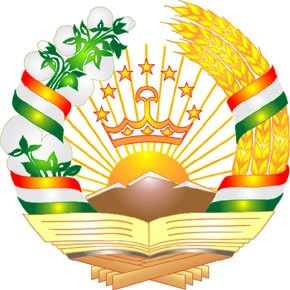 The National emblem of the Republic of Tajikistan is also a symbol of freedom and independence. It is an image of a stylized crown and a semicircle of seven stars above it in the rays of the sun rising from behind mountains covered with snow and framed by a crown composed on the right of wheat ears, on the left of cotton branches with open boxes. The crown is intertwined with a three-stripe ribbon on top, and in the lower sector there is an open book on a stand.
The National emblem of the Republic of Tajikistan is also a symbol of freedom and independence. It is an image of a stylized crown and a semicircle of seven stars above it in the rays of the sun rising from behind mountains covered with snow and framed by a crown composed on the right of wheat ears, on the left of cotton branches with open boxes. The crown is intertwined with a three-stripe ribbon on top, and in the lower sector there is an open book on a stand.
In the color image of the Tajik coat of arms, the crown, sun, mountains, ears, book and stand are gold; the stems and leaves of cotton are green, the stripes on the ribbons are red, white and green, respectively; the book cover is red.
The right to use the image of the coat of arms of the republic by enterprises, institutions and organizations can be given only by the Government of Tajikistan. Persons guilty of outraging the national emblem of the Republic are responsible in accordance with the law of the Republic of Tajikistan.
The coat of arms of Tajikistan was adopted on December 28, 1993.
The National Anthem of the Republic of Tajikistan The National Anthem of the Republic of Tajikistan is an expression of the inviolability of friendship and brotherhood of all peoples and nationalities of the country.
It is a sacred duty of every citizen to respect the Law on the National Anthem of the Republic of Tajikistan with dignity.
During the performance of the national anthem of Tajikistan, participants of the mass event listen to it standing up.
Persons guilty of insulting the national anthem of the Republic are brought to justice in accordance with the legislation of the Republic of Tajikistan.
The text of the anthem (words by Gulnazar Keldi, music by Sulaimon Yudakoa).
Political structure
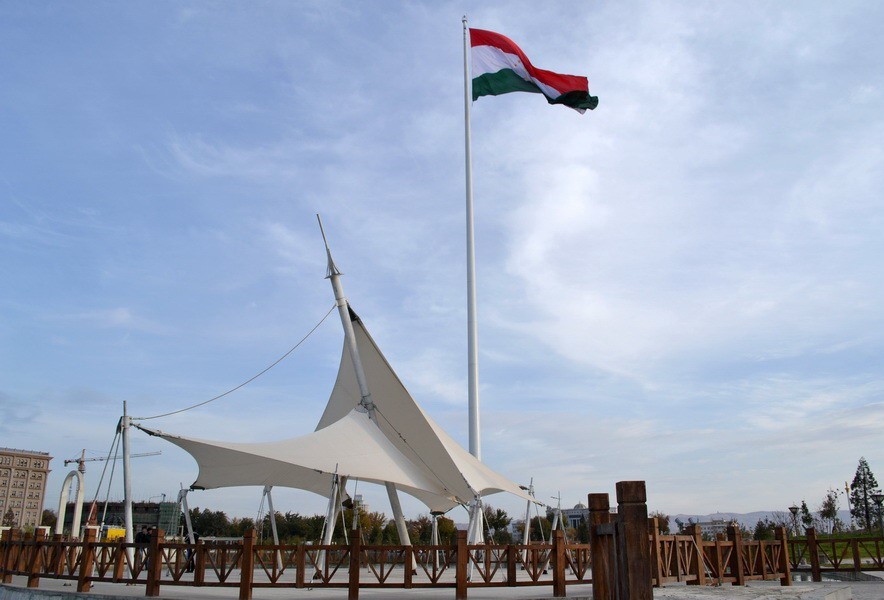
Tajikistan is governed by the President, and the legislative function is assigned to the bicameral parliament - the Majlisi Oli. Both the President and members of Parliament are elected for 5 years. There are also various parties in the country.
Administrative-territorial division. There are 3 viloyats (regions), 17 cities, 62 districts, 55 towns and 368 jamoats - rural communities in Tajikistan. At the same time, 13 districts are under republican subordination.
The capital city of Dushanbe with its 8 surrounding districts is a separate administrative unit. The population of Dushanbe is 764 thousand people (2013). In the symbiosis of narrow eastern streets and quite modern avenues, you can feel the special charm that always appears in places where different cultures come into contact.
Economy
Over the past decade, Tajikistan has demonstrated high economic indicators - the average growth rate exceeded 7.1%. In 2023, Tajikistan's economy grew by 8.3%, helped by domestic demand caused by remittances and exports of precious metals. The economy has seen widespread growth, mainly in the agricultural sector, followed by industry, construction and services.
Thanks to a young and growing population, water and hydropower potential, as well as development in sectors such as agriculture and food industry, mineral resources, tourism and more, Tajikistan has huge growth potential.
Prospects for economic development
Tajikistan's economy is expected to grow by 6.5% in 2024, which will be facilitated by private consumption, as Russia's demand for migrant workers remains high, as well as continued growth in real wages within the country and increased government spending on infrastructure.
The Government plans to further increase the share of budget expenditures on the social sphere, including increasing targeted social assistance aimed at strengthening the protection of vulnerable groups of the population.
Several factors pose risks to Tajikistan's economic prospects. These include geopolitical uncertainty, slower-than-expected global economic growth and tightening financial conditions, high contingent liabilities of state-owned enterprises and slow pace of structural reforms.
The science
A number of State plans and programs aimed at the development of science and education are being implemented in Tajikistan.
Currently, the development of science is recognized by the Government of the Republic of Tajikistan as a priority area. In the annual messages, the Founder of Peace and National Unity, the Leader of the Nation, the President of the Republic of Tajikistan, dear Emomali Rahmon, special attention is paid to the development of domestic science and the support of scientific personnel.
Scientists of the Academy of Sciences of the Republic of Tajikistan are determined to direct their knowledge and experience to the further socio-economic and cultural development of Tajikistan.
Based on these facts and the realities of the modern world, in order to strengthen the process of studying natural, exact and mathematical sciences, as well as the development of technical thinking of the younger generation and youth, the Decree of the President of the Republic of Tajikistan 2020-2040 declared the "Twentieth Anniversary of the study and development of natural, exact and mathematical sciences in the field of science and education". This initiative has opened a new page in the development of Tajik science.
Since the beginning of the implementation of the "Twentieth Anniversary", a number of measures have been taken to achieve the set goals, a set of measures is being carried out to improve the level of education and study of natural, exact and mathematical sciences. Among them is the organization of annual competitions for all generations of the population, from children and pupils of elementary grades of secondary schools to students of higher educational institutions and professional developers, inventors.
During this period, a new state educational TV channel "Science and Nature" was created, which broadcasts around the clock in several languages. For 2 years, he has been providing the country's population with information, reports, and scientific programs.
In addition, salaries of science and education workers are regularly increased annually, pupils of secondary schools and young scientists are stimulated by personal scholarships and prizes.
It is impossible not to mention the state support for the training of talented young specialists in foreign higher educational institutions and research centers.
All these aspects have made a significant contribution to increasing public interest and involving an increasing number of young people in education and career growth in these areas.
Transport
During the period of independence, the country's economic infrastructure continued to develop in the Republic of Tajikistan, including transport, which is one of the main determining factors in economic development, along with improving living standards and reducing poverty in the country.
Tajikistan has a very developed transport network. But despite this, road transport is still more popular. There are the largest highways in the country: Termez, Kurgan-Tube, Khojent, Kulyab. A new Kulma—Karokurum highway has also been opened in the country today. This is the Great Silk Road, which was popular in ancient times.
Road transport in Tajikistan

Most of the transportation in the country (90%) is carried out by road. The general purpose roads used by motorists have a length of 13 thousand kilometers. Tajikistan's road network has an uneven distribution across the country.
The structure and quality of roads depend on geographical factors, as well as on the number of people living in the area. Northern Tajikistan is famous for its better road surface: the Syrdarya River valley, the Hissar Valley, the Kulyab region, the Vakhsh Valley. But the difficult mountainous terrain does not allow creating good roads: Gorny Badakhshan, Zarafshan valley. Technical characteristics, as well as difficult climatic conditions, prevent the year–round operation of such highways as Kalaikhumb - Khorog, Dushanbe – Aini. Drivers can use these tracks for only six months of the year.
Railway transport in Tajikistan
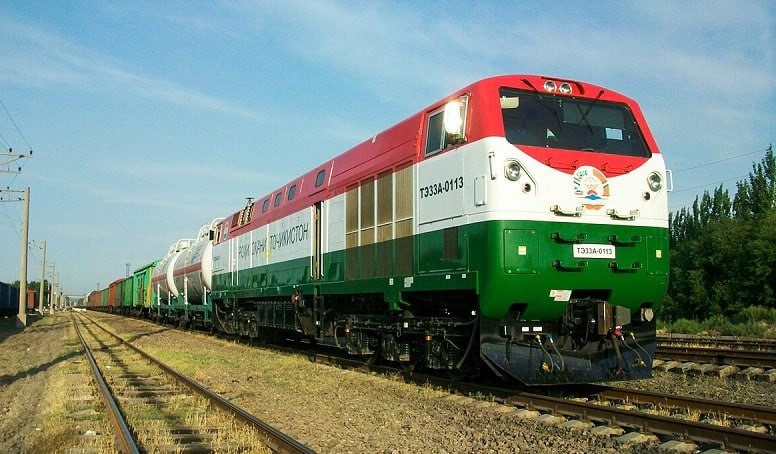
Difficult terrain conditions impede the good development of railway communication. There are only 490 km of railway tracks here. Most of the roads are located in the southern part of Tajikistan. The majority of interstate transportation is carried out by rail. Today, a new Kulyab-Astrakhan route is operating. The southern directions connect the capital of Tajikistan with the outside world, as well as with the industrial zones of the country. Tajikistan's railway transport has a wide gauge.
As in all countries, air travel is the most efficient and fastest. The total distance of airlines in Tajikistan is 4.8 thousand kilometers.
Air transport in Tajikistan
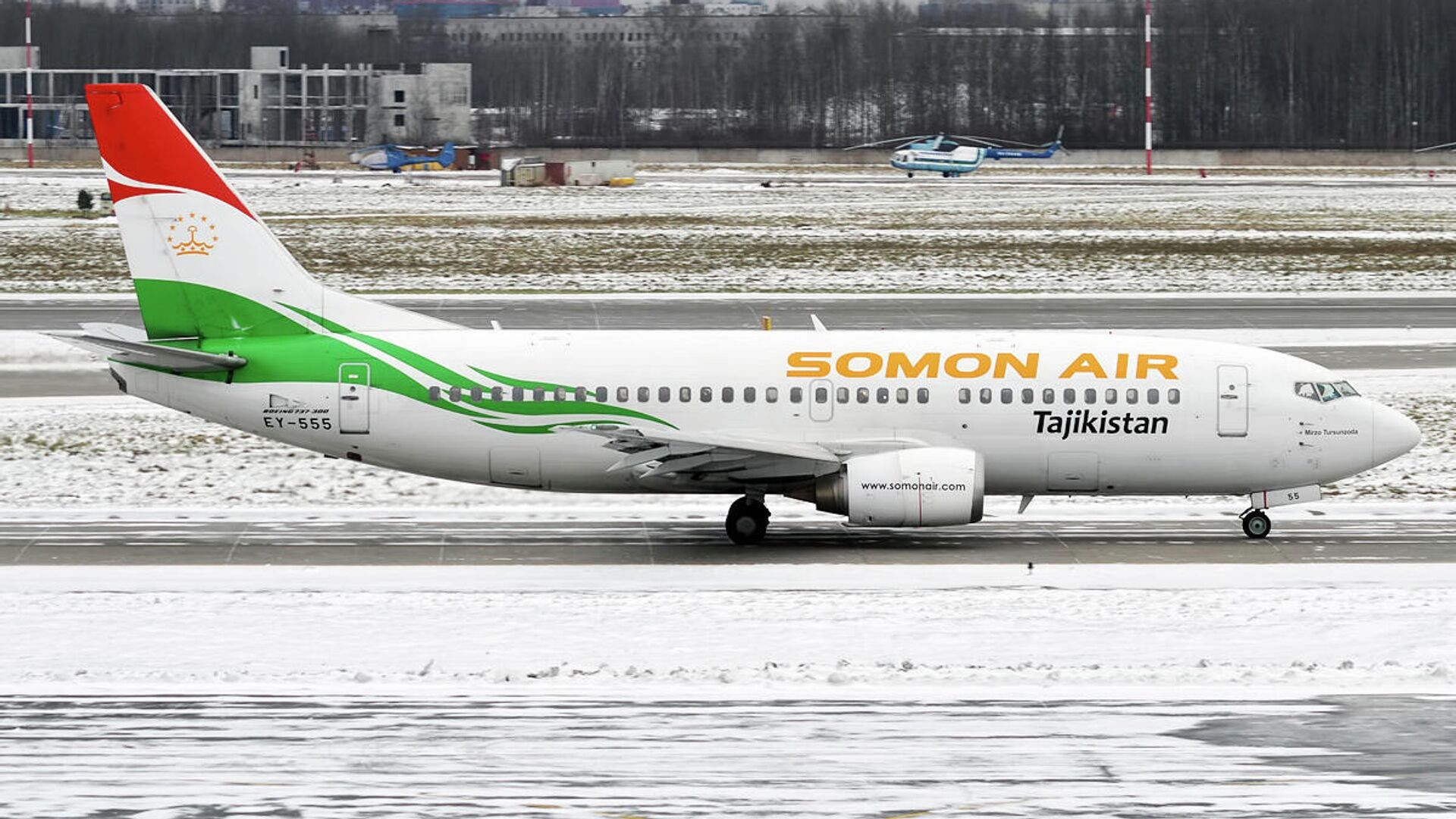
Since Tajikistan has no direct access to the sea, the availability of air transport is very important for it, its availability is fundamental. Thanks to modern aviation, the country communicates with the entire outside world. Tojikiston Airlines inherited the aviation equipment that was owned by Aeroflot.
Since the end of 1992, the company has been operating independently, while having a state status. It employs more than three thousand people. The airline flies daily to Moscow, Almaty, Novosibirsk, Yekaterinburg, Samara, Khorog, etc. There are also cities that are visited a little less often. The company operates international flights once a week: Dushanbe-Kabul, Dushanbe-Chorlu-Munich, Dushanbe-Tehran, Kulyab-Moscow. In addition to these flights, charter flights are also provided in Tajikistan. In 1998, the company had 25 TU aircraft, as well as 12 airliners. The rest of the Tajik Airlines' cars had worked out their working life by that time.
Customs regulations
The customs rules of Tajikistan do not differ much from other Central Asian countries. It is forbidden to import pornographic materials, narcotic drugs, weapons, ammunition and printed publications that can be interpreted as threatening the political system of the State. It should be noted separately that even those medicines that contain any narcotic substance cannot be imported. The exception is the availability of a prescription.
For foreign citizens, the ban also applies to the import and export of somoni. Otherwise, everything can be exported except food, precious stones, gold and minerals. If you wish to purchase any jewelry as a souvenir, you must first obtain permission to export it. The same applies to handmade products. If any particular copy was produced more than 50 years ago, you will have to receive written confirmation that it does not represent cultural or historical value.
The import of foreign currency in cash is not limited. If the imported amount is more than 5000 USD or equivalents in other currencies, then it must be declared. However, upon entry, we recommend that all imported money be included in the declaration, because in any case, a foreigner has the right to export cash currency from the country no more than the amount that he imported.
When leaving the country, the amount of more than 500 USD already needs to be declared. But there is a nuance here: it is allowed to export up to 2000 USD in cash from Tajikistan without any documents. When exporting over 2000 USD, it is necessary to provide the customs authorities with documents confirming the legality of the origin of the amount. Such a document is, among other things, a customs declaration confirming the import of cash foreign currency or currency valuables into the Republic of Tajikistan.
Geographical location
Tajikistan is a unique tourist attraction of our time, because it has not only an extensive cultural and historical heritage, but also an advantageous geographical location with a variety of natural landscapes, recreational areas, unique flora and fauna.
Since ancient times, the territory of Tajikistan has been located on important historical routes of the Great Silk Road, the road connecting East and West. The country is involved in international trade and cultural exchange, linking since ancient times the possessions of Bactria - Takharistan (Chaganian, Shumon, Akhorun, Kubodien, Vakhsh, Khutal, Rasht, Kumed, Darvoz, Vanj, Rushan and Vakhan), Sogda, Istaravshan (Ustrushan) and Ferghana with India, Afghanistan and China. The Great Silk Road became not only an exchange of goods between East and West, but also ideas, cultures and people.
Modern Tajikistan is a mountainous country with absolute heights from 300 to 7495 meters above sea level. 93% of the country's territory consists of mountain ranges belonging to the Pamir, Hissar-Alai and Tien Shan mountain systems. These ridges are separated by the rich and fertile lands of the Ferghana, Zerafshan, Vakhsh and Hissar valleys. The complexity of the relief and the large amplitude of the heights of mountain systems cause an exceptional diversity of flora and fauna.
Tajikistan is unique in its rich storehouse of minerals. More than 400 deposits have been explored in the country and about a hundred of them are being exploited, which produce up to forty types of mineral raw materials, fuel, ore and non-metallic minerals.
In terms of reserves of copper, silver, gold, lead, zinc, bismuth, strontium, antimony, tungsten, natural gas, coal and mineral waters, Tajikistan occupies one of the leading places in the world. The reserves of salts, facing, ornamental and precious stones are especially large.
Tajikistan is known for various mineral waters, which allowed the opening of large sanatoriums, resorts and health resorts: "Khoja Obigarm", "Yavroz", "Shaambary", "Kaltuch", "Zumrad", "Garm-Chashma".
Climate
Due to the peculiarities of the relief and location in the depths of Central Asia, Tajikistan has a sharply continental climate. However, in some regions of the country it can be called subtropical inland. On the plains in the vicinity of Dushanbe and Khujand, the climate is more temperate, summers are hot, arid, and in winter there is heavy precipitation in Dushanbe, while in the north of the country, in Khujand, the winter is snowless. On the other hand, due to the fact that 93% of the territory is located above 1000 meters above sea level, a polar climate operates in the mountains above 3000 meters in winter.
In January, the average temperature in Tajikistan ranges from 0°C in the plains to -20°C in the mountains. In July, the average temperature on the plains is +30 °C, and in the mountains from 0 to +15 ° C (depending on altitude). Therefore, summer is the most suitable time when it is better to go to Tajikistan. The absolute minimum temperature in Tajikistan was recorded at Lake Bulunkul -63 °C. The absolute maximum was +48°C in the settlement of Nizhny Panj.
In winter, heavy snowfalls occur in the western part of Tajikistan, which closes high-altitude road passes, for example, the Anzob Pass connecting Dushanbe and Khujand.
Time zone
Tajikistan is located in the time zone designated by the international standard as UTC+5. Daylight saving time has not been applied since 1991, although it was used in Soviet times.
Language
The official language. On October 5, 2009, after the adoption of the law "On the State Language of the Republic of Tajikistan", this date was declared the State Language Day in the country."
The population of the country speaks the official Tajik language almost everywhere. Tajik belongs to the southwestern group of Iranian languages.
Since the first days of independence, great attention has been paid in Tajikistan to the preservation of national heritage, including the language. The adoption of the Law "On the State Language of the Republic of Tajikistan" was an important factor in further, deeper awareness of national identity, strengthening the position of the native language and provided a powerful incentive for development. The national language is history, without which no nation is conceivable. Language is necessary for communication, it testifies to its identity, determines the spiritual potential of the nation. It is the language that is given the right to be a reflection of the history of the people and the development of the state.
Population
Population size Tajikistan as of January 1, 2023, amounted to 10 million 011 thousand people.
Religion
The vast majority of citizens are Muslims. Of these, 85% are adherents of Sunni Islam, and 5% are Shiite. The remaining 10% of the population profess other religions. Many representatives of non-Muslim faiths of Tajikistan live in the capital of the republic.
Currency
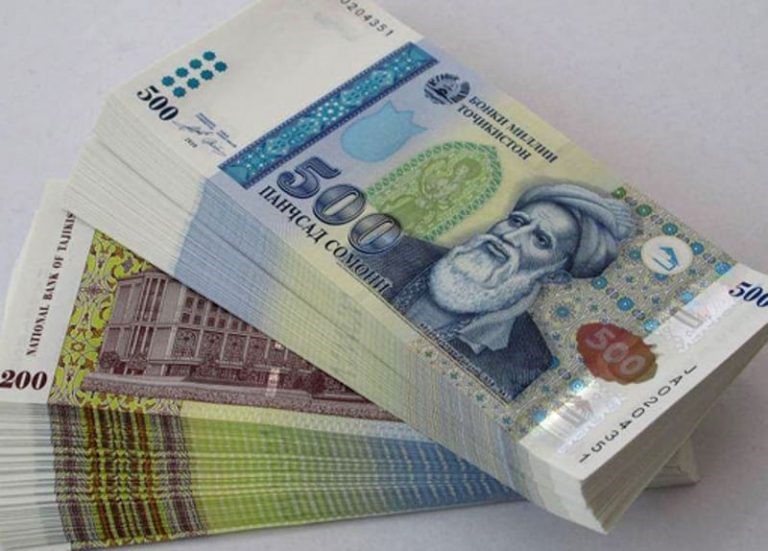
The monetary unit is the somoni. The national currency is the only legal tender in Tajikistan, all payments are made in somoni. One somoni is equal to 100 dirams. The Tajik monetary unit received its name in honor of the founder of the first Tajik state, Ismail Samani (in the Tajik transcription "Somoni").
The banknotes of the new currency contain portraits of prominent figures of the modern and past Tajik people, as well as images of architectural and historical monuments of Tajikistan, objects of applied art and everyday life of the Tajik people.
Strategic plans of the Republic of Tajikistan
To determine the strategic plans of the Republic of Tajikistan in the future, the National Development Strategy of the Republic of Tajikistan for the period up to 2030 was adopted.
On the basis of this Strategy, short-term, medium-term and long-term plans for the economic and social development of the country are aligned with each other, national goals, objectives and action plans are defined. This important document lays down the final task of the country's transition from an agrarian-industrial to an industrial-agrarian country.
Phone codes in Tajikistan
Tajikistan's international code: +992 (8-10 992)
To get to Tajikistan, you need to dial + 992 - area code - phone number.
Telephone codes of city lines of large cities of Tajikistan:
Dushanbe: 372
Hissar: 3139
Istaravshan: 3454
Kulyab: 3322
Penjikent: 3475
Khorog: 35220
Khujand: 3422